The Best Diamond Jewelry Designs Inspired by Ancient Egypt
On the 100th anniversary of the discovery of King Tut’s tomb, jewelers are still obsessed with Egyptian culture.

The old adage ‘you can’t take it with you’ doesn’t apply to ancient Egyptians who were buried with gilded treasures and piles of jewelry. They believed those precious objects and jewels followed them into the afterlife.
That’s why Pharoah Tutankhamun was buried with thousands of gold statues, artifacts and heaps of jewels. When his tomb of riches was famously discovered a century ago by British archeologist Howard Carter, it was the best-preserved tomb ever unearthed in the Valley of Kings. Those treasures provided unrivaled insight into its ancient culture and sparked an obsession with all things Egyptian.
Ancient Egypt’s mysticism, symbolism and exotic aesthetic permeated everything from art and architecture to style and especially jewelry.
Even before the discovery of King Tut’s tomb, there was a remarkable attraction to Egypt’s mysterious culture. It began with Napoleon Bonaparte’s campaign to the African country from 1798 to 1801. When he returned to Europe, he brought with him the first glimpse of Egypt’s distinctive civilization. Decades later, with the opening of the Suez Canal in 1869 the interest was revived with Egyptian references infused in a range of designs.
The world’s love affair with Ancient Egypt inspired a jewelry movement.
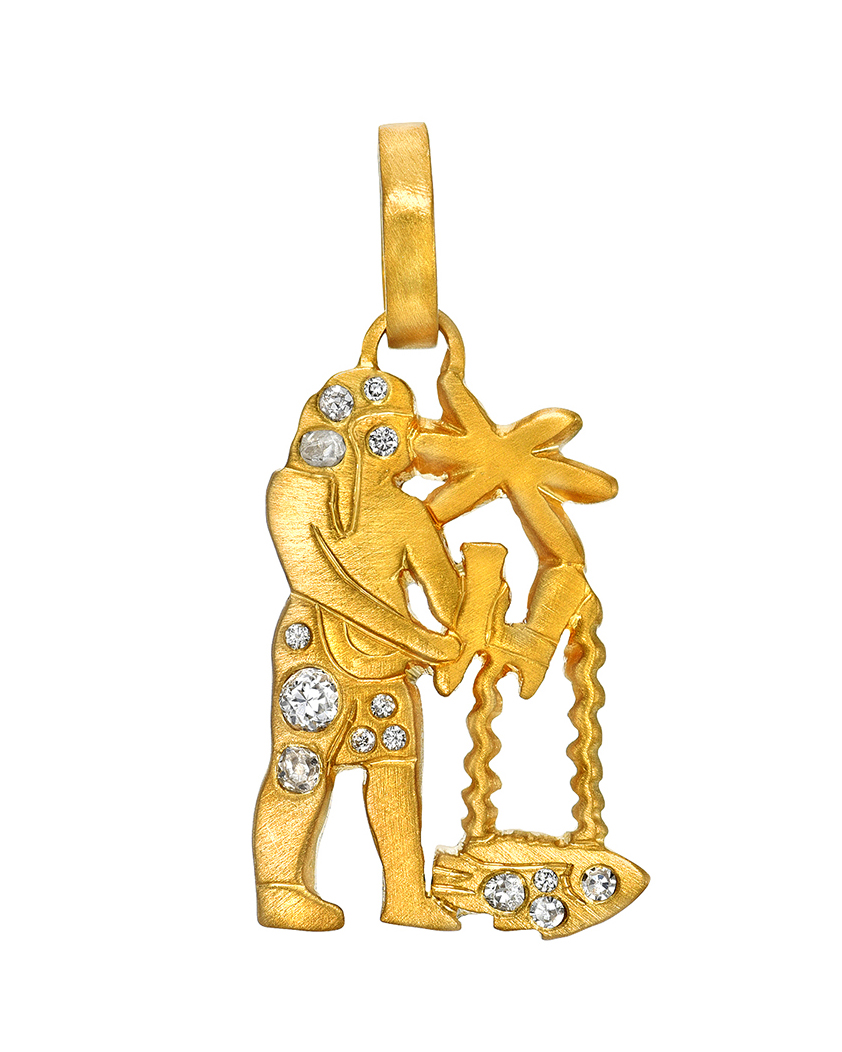
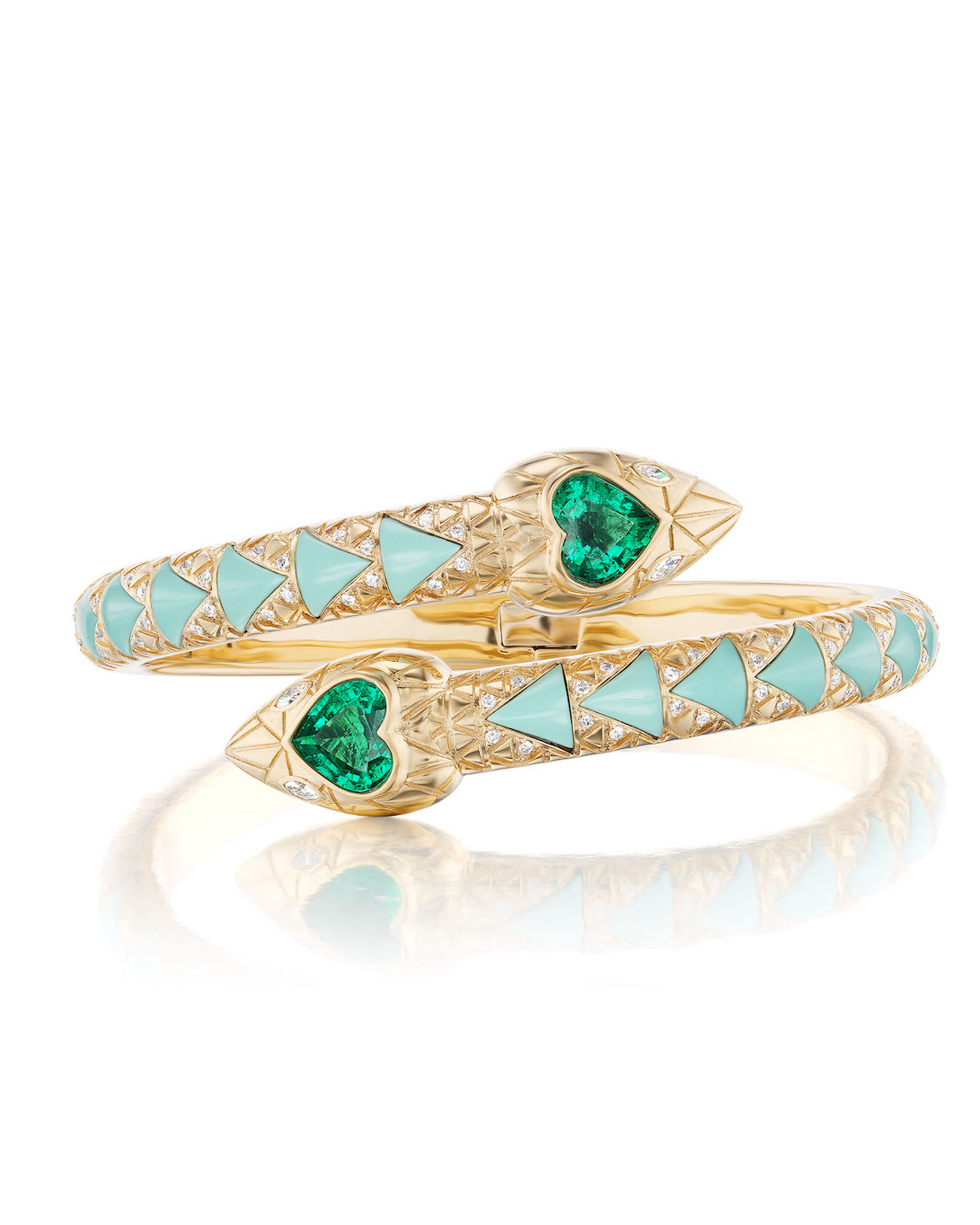
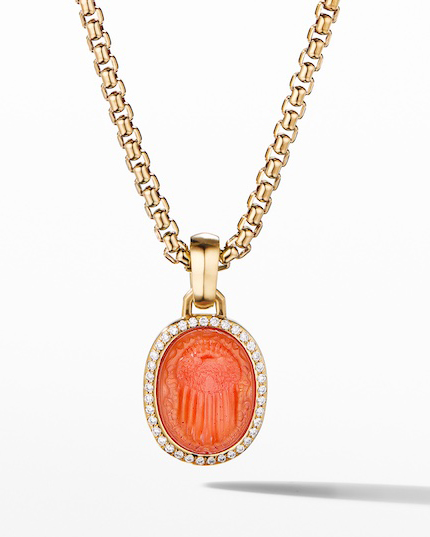
But it was Howard Carter’s discovery of riches, which coincided with the Art Deco movement, that had the biggest influence on jewelry. That mother lode of ancient treasures provided endless inspiration for jewelry’s Egyptian Revival movement, led by the great houses—Cartier, Lacloche Frères, Tiffany, Van Cleef & Arpels. Designs featured carved and cut colorful gemstones and diamonds in symbolic motifs and some showcased ancient Egyptian artifacts—faience, scarabs, pharaohs and sphinxes.
Cartier was the most prolific designer of Egyptian Revival jewelry, and those highly coveted pieces command top dollar at auction today. Signature pieces featured Egyptian motifs in diamonds, rubies, emeralds and sapphires set in platinum. There were colorful ancient carved scarabs and faience in large-scale brooches and pendant necklaces, and finely detailed diamond and gemstone bracelets told stories in hieroglyphics.
With the onset of World War II, the interest in the Egyptian Revival style, which began around 1910, waned. In the post War era, fashions changed and called for a different jewelry style.
Some of today’s best designers are revisiting the culture of Ancient Egypt with a modern twist on diamond jewelry.
Darius Jewels: Zodiac
The allure of Ancient Egypt has been revived today but this time in a distinctly contemporary style. “I’m taking historical references and reinterpreting it in my own way,” says Darius Khonsary of Darius Jewels. For her diamond and gold zodiac collection, the Los Angeles-based designer was inspired by the celebrated Dendera zodiac symbols that appear in bas-relief in Egypt’s Hathor temple at Dendera. Those characters were based on the original Babylonian depiction that inspired our modern zodiac symbols.
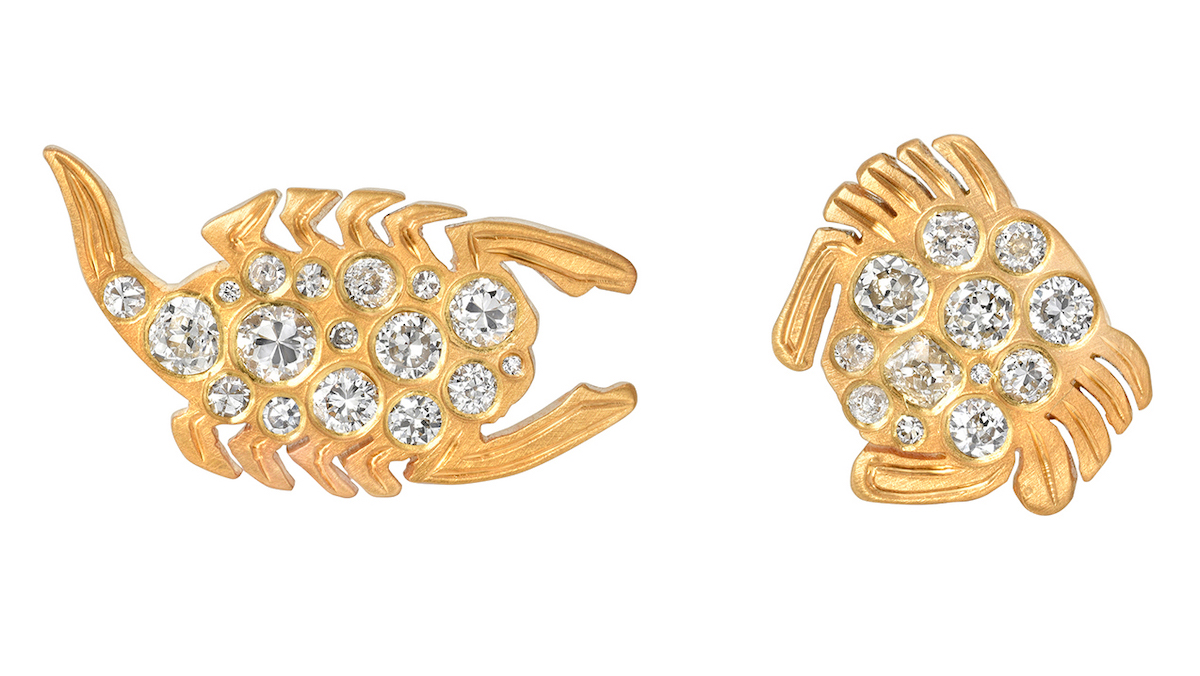
“I wanted to stay true to the original reliefs,” she explains. So, she drew replicas of the zodiac and had them hand carved in wax and cast in gold. To give it a modern take, she set them with diamonds flush against the metal and finished them with a 24K gold hand-etched satin finish.
Her new Gala necklace and earrings were inspired by an Egyptian necklace from a book. Rather than using carved beads like the original, she used diamonds to recreate the original patterns in gold. The motif is a symbol of an eye, the historic symbol of protection and transformation.
Silvia Furmanovich: Egyptian Expedition
Brazilian designer Silvia Furmanovich, known for mixing different cultural references and ancient crafts in her work, spent weeks exploring Egypt’s historic design and crafts.
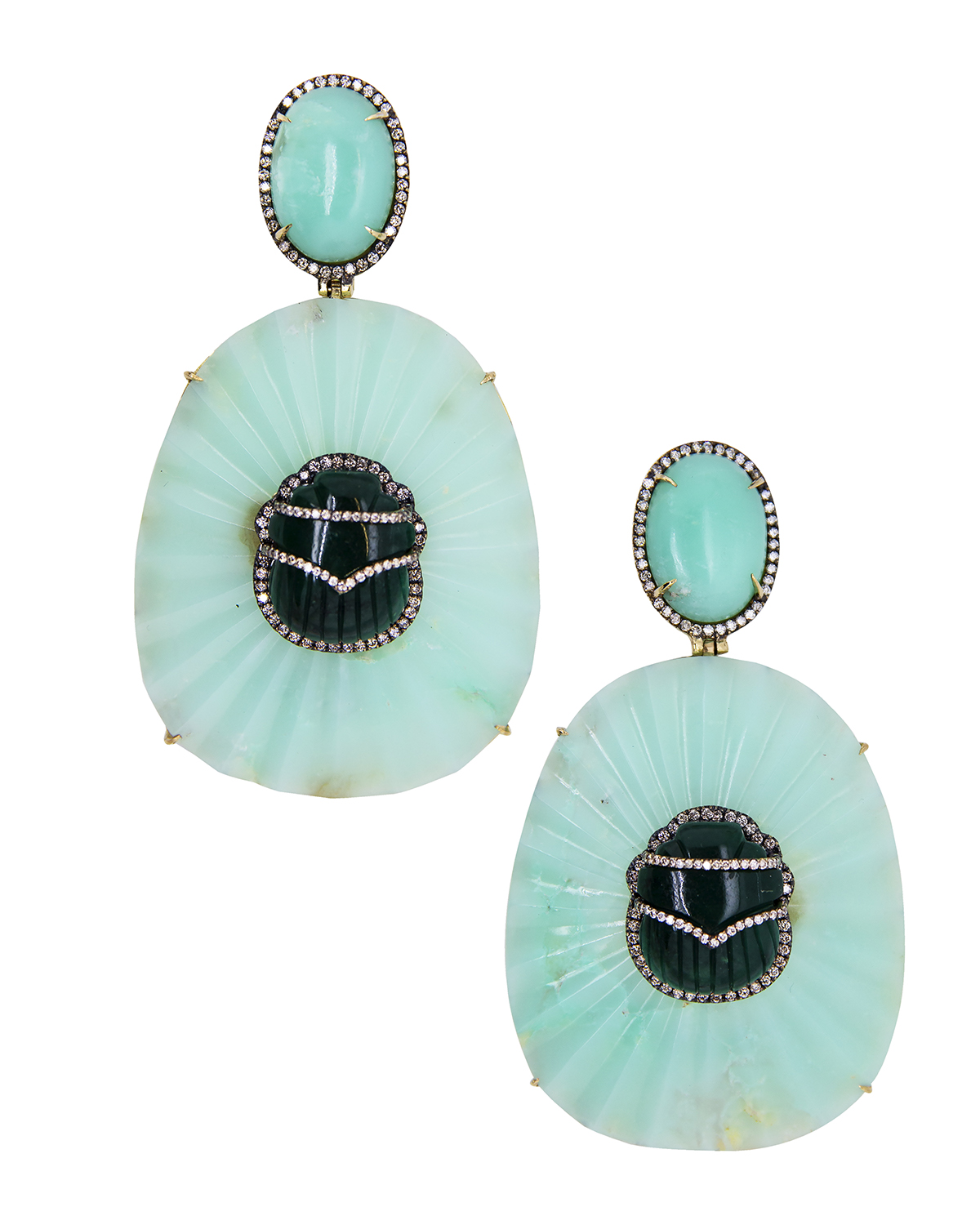
In Cairo, she met gemstone carvers who she commissioned to sculpt pieces in lapis lazuli, turquoise, jasper, and alabaster. In Luxor, she visited Nefertari’s Tomb, which inspired images of regal women hand painted on wood and stone earrings. And the country’s majestic sunsets, sand dunes and architecture were translated into richly beaded cuffs, elaborate pendants and colorful earrings that exude the spirit of Egypt in a modern style.
Harwell Godfrey: Modern Queen of the Nile Jewels
Another great Ancient Egypt influence in diamond jewelry remains Cleopatra, but not the classical Queen of the Nile. Elizabeth Taylor’s unforgettable portrayal of Cleopatra draped in fantastical costumes and jewelry in the 1960s movie remains our image of a glamorous bejeweled Egyptian Queen.
Designer Lauren Harwell Godfrey’s Cleopatra’s Vault collection of bold, colorful pieces reflects a modern version of the iconic queen. “I thought if Cleopatra were alive today what would her jewelry look like?” she said. “It would be bold, certainly not shy.”
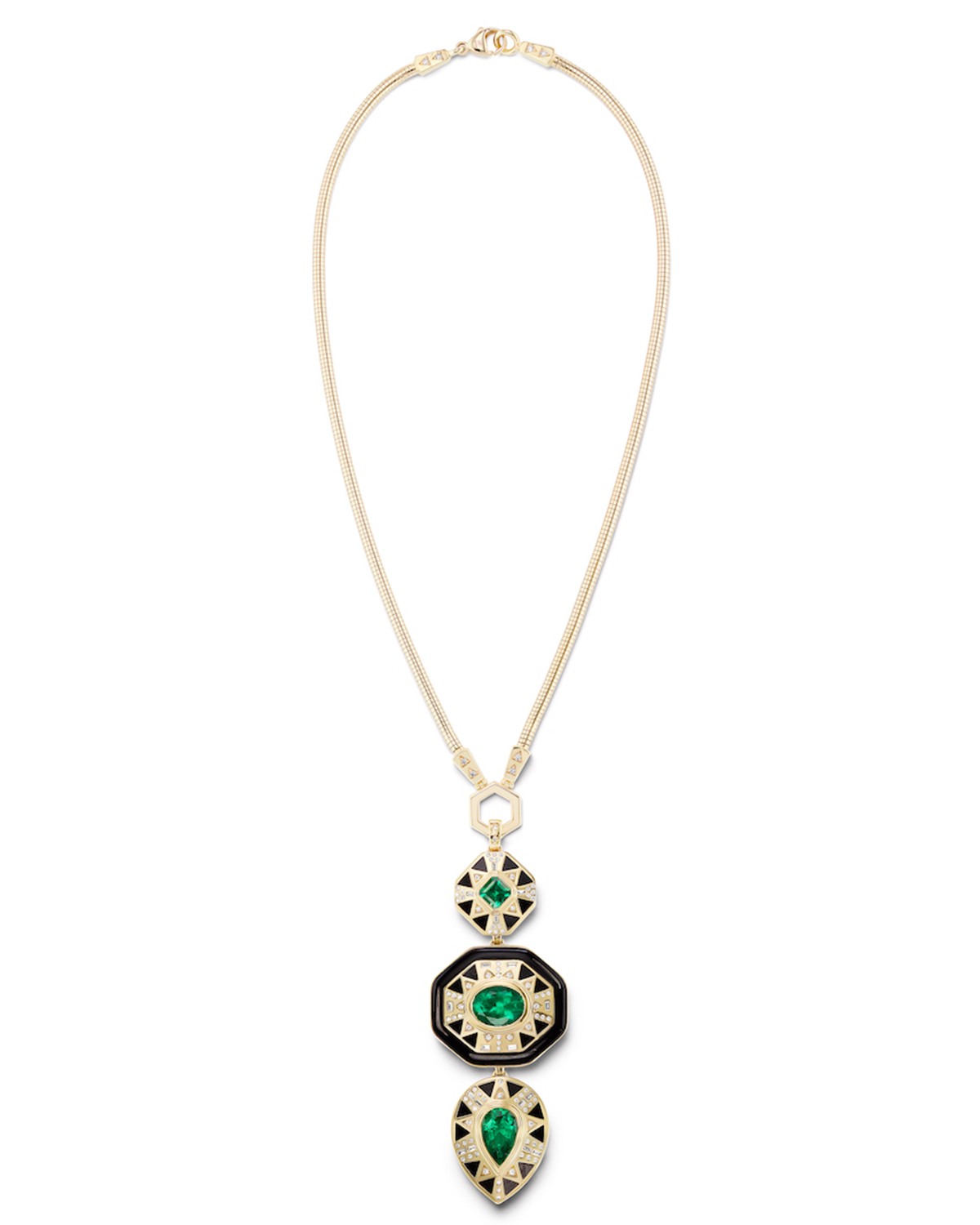

“The design language of Egypt is super interesting to me,” she says. “I wanted to reinvent that language in a new way that feels evocative of Egypt but in my style.” That comes together in large-scale gemstone totem necklaces and rings with the designer’s signature triangular stone inlay and diamonds that add a touch of sparkle.
Messika: Regal Egyptian-Style Diamond Jewelry
Valérie Messika’s new Akh-Ba-Ka collection features the spirit of Egypt in showstopping diamond jewelry designs. It started with an extraordinary 110-carat rough diamond that was uncovered in Botswana. Instantly, the designer envisioned a shield shaped stone that would serve as the head of the scarab for a collar. Not just any collar, the piece features a removable 33-carat diamond that can also be worn as a brooch. Surrounded by 800 diamonds, the regal piece is remarkably lightweight.


David Yurman: Eternal Diamond Jewels
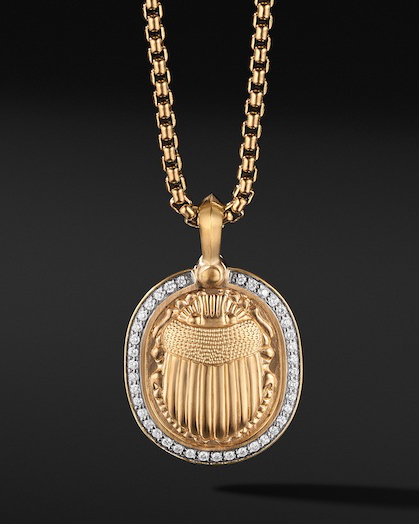
The scarab is perhaps the most universal Egyptian jewelry symbol today. A sign of rebirth, resurrection and good fortune, it’s long coveted in Egyptian culture and also a favorite of David Yurman. The designer features the scarab in men’s and women’s pendants and rings surrounded by black or white natural diamonds. It delivers style and karma, and we could use a little karma today.
